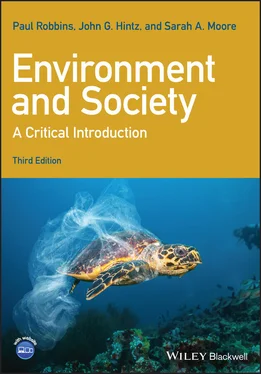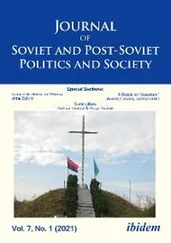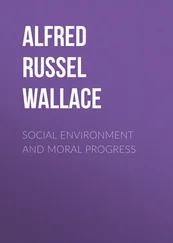11.5 Cartogram of carbon emissions. In this map, countries are shown with their apparent size proportional to their total annual emissions in
11.6 The strange logic of carbon offsets.
12.1 Sequoia sempervirens, the genus in the cypress family Cupressaceae.Sequoia National Park, California. Trees are some of the largest and longest-lived organisms around which human beings live. Their influence on human culture has been enormous.
12.2 Global deforestation rates.
12.3 Forest cover in France from 1500 to 2000. The pattern of decline and regrowth follows a notably “U-shaped” curve, which has been a key argument in favor of the so-called forest transition theory.
13.1 The gray wolf.
13.2 World map of countries with known gray wolf populations in
13.3 Estimated range of gray wolves in the contiguous United States.
13.4 Wolf management zones in Minnesota.
13.5 An early twentieth-century government wolf trapper.
14.1 The nuclear fuel chain.
14.2 World uranium production,
14.3 Colonial division of labor in the Navajo uranium mines. Denny Viles (third from left), executive with the Vanadium Corporation of America, in shirt, tie, and soft-sided hat; the other three men in the picture are hard-hatted Navajo mineworkers.
14.4 The Ranger Uranium mine and mill, Northern Territory, Australia.
15.1 The sleek, powerful, bluefin tuna. The bluefin are the largest of the tuna (the largest one ever caught weighed 1496 pounds).
15.2 Dolphin mortality at the hands of US fishing vessels using purse-seine tuna technology in the Eastern Tropical Pacific, 1960–
15.3 The “Medina panel,” one of a few technological and operational changes made by purse-seine tuna fishers in attempts to reduce dolphin mortality.
15.4 A label from a can of Alaska salmon bearing the Marine Stewardship Council stamp of approval. (MSC label blown up to show detail).
15.5 Does a tuna have rights? Mutilated tuna rest on pallets at a seafood wholesaler in Tokyo. The image accompanied a “treehugger.com” article about overfished tuna stocks. No mention was made of the tunas’ rights or their dignity being violated, either before or after catch.
16.1 Lead arsenate – most popular pesticide prior to DDT.
16.2 Map showing quantity of turfgrass across the United States.
16.3 The lawn chemical commodity and knowledge chain.
17.1 The Poland Spring “Spring House” in 1910. Like other naturally occurring springs, these water sources had become elite destinations in the 1800s. Markets for their waters were associated with luxury, health, and opulence. They were not a typical household expense, however, for working people who were only then beginning to receive regular water delivery through modern plumbing.300
17.2 Women draw water from a communal well in Rajasthan, India. Though groundwater declines threaten these rural water supplies, villagers depend on freely available communal water sources for survival, and upon the significant women’s labor require to draw, carry, and dispense water every day.
17.3 US per capita consumption of bottled water from 1988 to 2007. The steady increase in US bottled water consumption shows no signs of abatement. Consumption has quadrupled in the past 20 years.
17.4 Cartogram of bottled water consumption worldwide.
17.5 Median amount spent each month by US survey respondents on bottled water, per household.
17.6 Percentage of US survey respondents who think bottled water is safer than tap water.
18.1 Transfer and spread of the potato after the Columbian Exchange.
19.1 In Agbogbloshie, Accra, Ghana.
19.2 Life-cycle flow chart for electronic products.
19.3 Global trade in e-waste,
19.4 Battery Imports to the United States from Canada and Mexico for 2011.
2.1 Who is overpopulated? Some comparisons of population, per capita gross domestic product, energy use, and other resource demands. Different places have widely divergent levels of population, affluence, and technology, with unclear implications for environmental impact.
3.1 Market-based solutions. An overview of some dominant environmental regulatory mechanisms that involve market components and are based in part on market logics. Note that in all cases the state remains an important player in making markets work and achieving environmental goals.
12.1 Comparison of the number of important insect species measured to be present in differing systems of coffee production in Costa Rica
12.2 Some key tropical exports and their leading export countries. Most major tropical commodities are grown in forest frontiers of countries experiencing tropical deforestation.
12.3 The predominant banana export companies operating globally, their share of the market in 2002, and their headquartered locations.
13.1 Countries worldwide with gray wolf populations of 3000 or greater.
14.1 Countries producing most uranium, 2019.
14.2 Comparison of predicted and actual radioactive contaminant migration at Maxey flat low-level radioactive waste facility, Kentucky (US),
15.1 Overfished marine species.
17.1 Freshwater usage around the world. The total average withdrawals of freshwater per person vary enormously around the world, as do the proportions of those dedicated to domestic use.
17.2 Domestic US water use. A family of four uses 400 gallons of water daily, 300 of which are used indoors
17.3 Selected leading per capita consumer nations of bottled water, 2007.
18.1 Energy inputs and costs of potato production per hectare in the United States.
2.1 Environmental Solution? The One-Child Policy
3.1 Environmental Solution? Insurance Addresses Climate Change
4.1 Environmental Solution? The Montreal Protocol
5.1 Environmental Solution? Endangered Species Act
6.1 Environmental Solution? Ecomodernism
7.1 Environmental Solution? Joint and Several Liability
8.1 Environmental Solution? Preserving “Alien” Species in Wild Horse Conservation
9.1 Environmental Solution? Adorable plastic sensors and feminist marine science
10.1 Solution? Treatment as State (or Sovereign) under the Clean Water Act
11.1 Environmental Solution? Geoengineering
12.1 Environmental Solution? Shade-Grown Coffee
13.1 Environmental Solution? Wildlife Friendly Beef and Wool
14.1 Environmental Solution? Energy-Efficient Buildings
15.1 Environmental Solution? Plant-based Meat
16.1 Environmental Solution? Organic Lawn Inputs
17.1 Environmental Solution? A Circular Economy for PET Plastics?
18.1 Environmental Solution? Fighting Food Apartheid and Growing Food Sovereignty
19.1 Environmental Solution? The E-Stewards Program
This book would have been impossible without the impeccably polite prodding of Justin Vaughan at Wiley Blackwell, an editor whose creative interventions extend beyond editing and were key sparks in imagining the book and setting us writing. He also sprang for dinner that time in Boston. Many thanks too to Charlie Hamlyn at Wiley Blackwell for his endless patience and hard work.
Paul Robbins and Sarah Moore would like to thank the University of Wisconsin-Madison, its Department of Geography, and the Nelson Institute for Environmental Studies. They would especially like to thank the students of their Environment and Society classes there, and at the University of Arizona, for slogging through early performances and later iterations of some of the material presented here. They owe a debt of gratitude to their current and former graduate students who embody and convey much of the plural thinking in the book. Paul is indebted to Dr. Dustin Mulvaney for insights on Cal Fire and the Amah Mutsun and to Dr. Kyle White for his work on settler colonialism. Paul and Sarah would also like to thank Marty Robbins, Vicki Robbins, and Mari Jo Joiner. Shout out to Alexander Robbins-Moore, who antedates the last edition of this book, and has usually demonstrated patience with the co-inhabitants of his house. Special thanks to Zoey the Great Dane, who is a profound society–environment puzzle in her own right.
Читать дальше











